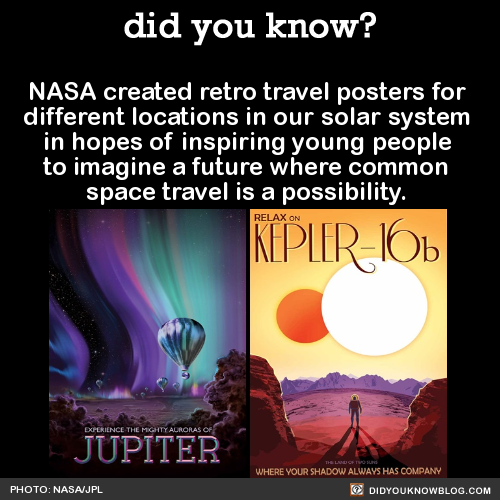Mars Pathfinder & Sojourner Rover (360 View) Explained
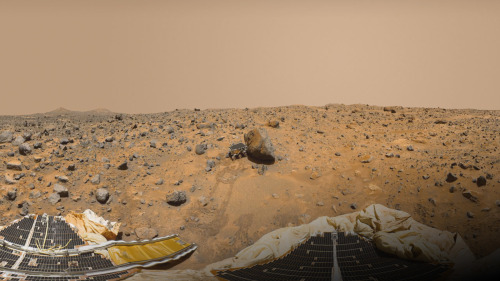
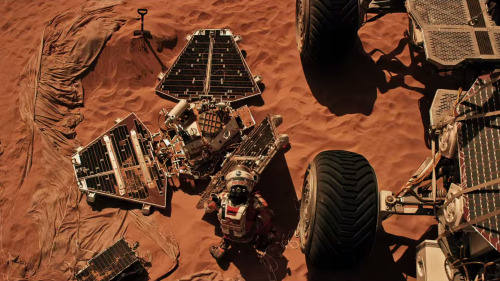
Mars Pathfinder & Sojourner Rover (360 View) Explained
Thanks to new technology, we can take a 360-degree tour of the 1997 Pathfinder mission landing site, including Sojourner, the first Mars rover. Check out this interactive YouTube panorama, and then…
…keep scrolling to find out more about each point of interest, how the Pathfinder mission compares to “The Martian” and NASA’s real Journey to Mars.

Yogi
“Yogi” is a meter-size rock about 5 meters northwest of the Mars Pathfinder lander and the second rock visited by the Sojourner Rover’s alpha proton X-ray spectrometer (APXS) instrument. This mosaic shows super resolution techniques applied to help to address questions about the texture of this rock and what it might tell us about how it came to be.

Twin Peaks
The Twin Peaks are modest-size hills to the southwest of the Mars Pathfinder landing site. They were discovered on the first panoramas taken by the IMP camera on the July 4, 1997, and subsequently identified in Viking Orbiter images taken over 20 years ago. They’re about 30-35 meters tall.

Barnacle Bill
“Barnacle Bill” is a small rock immediately west-northwest of the Mars Pathfinder lander and was the first rock visited by the Sojourner Rover’s alpha proton X-ray spectrometer (APXS) instrument. If you have some old-school red-cyan glasses, put them on and see this pic in eye-popping 3-D.

Rock Garden
The Rock Garden is a cluster of large, angular rocks tilted in a downstream direction from ancient floods on Mars. The rocky surface is comprised of materials washed down from the highlands and deposited in this ancient outflow channel.

MOAR INFO
Pathfinder Lander & Sojourner Rover
Mission Facts [PDF]
Science Results
Rock & Soil Types


This vista was stitched together from many images taken in 1997 by Pathfinder.

Pathfinder and Sojourner figure into Mark Watney’s quest for survival on the Red Planet in the book and movie, “The Martian.” See JPL’s role in making “The Martian” a reality: http://go.nasa.gov/1McRrXw and discover nine real NASA technologies depicted in “The Martian”: http://go.nasa.gov/1QiyUiC.

So what about the real-life “Journey to Mars”? NASA is developing the capabilities needed to send humans to Mars in the 2030s. Discover more at http://nasa.gov/journeytomars and don’t forget to visit me when you make it to the Red Planet. Until then, stay curious and I’ll see you online.
More Posts from Maevetheeuropan and Others


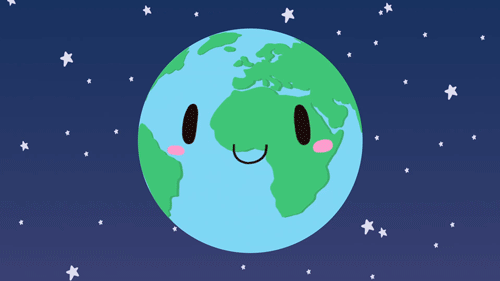


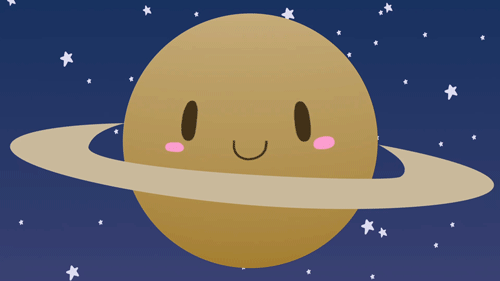

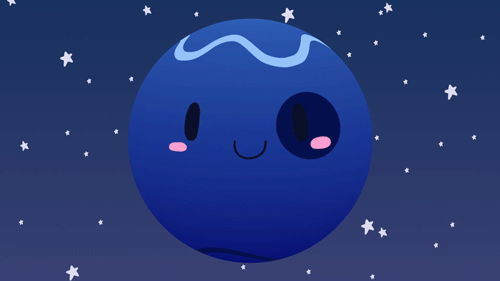
The Solar System!

bonus Pluto!
Five human spaceflight missions to look forward to in the next decade
by Chris Arridge

From astronauts breaking records for the longest amount of time spent in space to experiments growing food and keeping bacteria in orbit, the past decade of human spaceflight has been fascinating. There has also been an explosion of privately-funded spaceflight companies providing access to space, including delivering supplies to the International Space Station (ISS).
The next decade will see a remarkable mix of countries and companies getting involved. Plans include taking humans from low-Earth orbit back to the moon and even an asteroid in the 2020s – all designed to help prepare for the ultimate goal of a human mission to Mars in the 2030s.
Keep reading

That’s tonight fyi
When Can I Die on Mars?
Elon Musk recently announced SpaceX’s plans to send a spacecraft to the surface of Mars by 2018. It’s never been easier to die on Mars.
By: Fraser Cain. Support Universe Today on Patreon

That looks pretty damn cool.
(via The World’s First ‘Marschitect’ Is Laying the Groundwork for Architecture in Space — How We Get To Next)
HUGE ANNOUNCEMENT!
Elon Musk is set to announce his plans for Mars colonization in an hour, at 2:30 Eastern Time.
Please watch it because this could be history in the making.

This is hands down one of the most beautiful images I’ve ever seen. This is a visible-light image of Jupiter’s clouds from a mere 5000 km away.
What’s even more amazing is that this image was taken by JunoCam, NASA’s camera essentially being controlled by regular folks, not scientists. The public takes part in selecting targets to photograph, as well as having access to the raw data that comes back and you can even take the raw images that come back and process your own picture! Learn more about it all right here.
Thank you NASA!
(Image credit: NASA/JPL-Caltech/SwRI/MSSS/Gerald Eichstaedt/John Rogers)

NASA scientists have reported that they’ve successfully tested an engine called the electromagnetic propulsion drive, or the EM Drive, in a vacuum that replicates space. The EM Drive experimental system could take humans to Mars in just 70 days without the need for rocket fuel, and it’s no exaggeration to say that this could change everything.
But before we get too excited (who are we kidding, we’re already freaking out), it’s important to note that these results haven’t been replicated or verified by peer review, so there’s a chance there’s been some kind of error. But so far, despite a thorough attempt to poke holes in the results, the engine seems to hold up.
Continue Reading.
When Dead Stars Collide!
Gravity has been making waves - literally. Earlier this month, the Nobel Prize in Physics was awarded for the first direct detection of gravitational waves two years ago. But astronomers just announced another huge advance in the field of gravitational waves - for the first time, we’ve observed light and gravitational waves from the same source.

There was a pair of orbiting neutron stars in a galaxy (called NGC 4993). Neutron stars are the crushed leftover cores of massive stars (stars more than 8 times the mass of our sun) that long ago exploded as supernovas. There are many such pairs of binaries in this galaxy, and in all the galaxies we can see, but something special was about to happen to this particular pair.

Each time these neutron stars orbited, they would lose a teeny bit of gravitational energy to gravitational waves. Gravitational waves are disturbances in space-time - the very fabric of the universe - that travel at the speed of light. The waves are emitted by any mass that is changing speed or direction, like this pair of orbiting neutron stars. However, the gravitational waves are very faint unless the neutron stars are very close and orbiting around each other very fast.

As luck would have it, the teeny energy loss caused the two neutron stars to get a teeny bit closer to each other and orbit a teeny bit faster. After hundreds of millions of years, all those teeny bits added up, and the neutron stars were *very* close. So close that … BOOM! … they collided. And we witnessed it on Earth on August 17, 2017.

Credit: National Science Foundation/LIGO/Sonoma State University/A. Simonnet
A couple of very cool things happened in that collision - and we expect they happen in all such neutron star collisions. Just before the neutron stars collided, the gravitational waves were strong enough and at just the right frequency that the National Science Foundation (NSF)’s Laser Interferometer Gravitational-Wave Observatory (LIGO) and European Gravitational Observatory’s Virgo could detect them. Just after the collision, those waves quickly faded out because there are no longer two things orbiting around each other!
LIGO is a ground-based detector waiting for gravitational waves to pass through its facilities on Earth. When it is active, it can detect them from almost anywhere in space.

The other thing that happened was what we call a gamma-ray burst. When they get very close, the neutron stars break apart and create a spectacular, but short, explosion. For a couple of seconds, our Fermi Gamma-ray Telescope saw gamma-rays from that explosion. Fermi’s Gamma-ray Burst Monitor is one of our eyes on the sky, looking out for such bursts of gamma-rays that scientists want to catch as soon as they’re happening.
And those gamma-rays came just 1.7 seconds after the gravitational wave signal. The galaxy this occurred in is 130 million light-years away, so the light and gravitational waves were traveling for 130 million years before we detected them.

After that initial burst of gamma-rays, the debris from the explosion continued to glow, fading as it expanded outward. Our Swift, Hubble, Chandra and Spitzer telescopes, along with a number of ground-based observers, were poised to look at this afterglow from the explosion in ultraviolet, optical, X-ray and infrared light. Such coordination between satellites is something that we’ve been doing with our international partners for decades, so we catch events like this one as quickly as possible and in as many wavelengths as possible.

Astronomers have thought that neutron star mergers were the cause of one type of gamma-ray burst - a short gamma-ray burst, like the one they observed on August 17. It wasn’t until we could combine the data from our satellites with the information from LIGO/Virgo that we could confirm this directly.

This event begins a new chapter in astronomy. For centuries, light was the only way we could learn about our universe. Now, we’ve opened up a whole new window into the study of neutron stars and black holes. This means we can see things we could not detect before.

The first LIGO detection was of a pair of merging black holes. Mergers like that may be happening as often as once a month across the universe, but they do not produce much light because there’s little to nothing left around the black hole to emit light. In that case, gravitational waves were the only way to detect the merger.

Image Credit: LIGO/Caltech/MIT/Sonoma State (Aurore Simonnet)
The neutron star merger, though, has plenty of material to emit light. By combining different kinds of light with gravitational waves, we are learning how matter behaves in the most extreme environments. We are learning more about how the gravitational wave information fits with what we already know from light - and in the process we’re solving some long-standing mysteries!
Want to know more? Get more information HERE.
Make sure to follow us on Tumblr for your regular dose of space: http://nasa.tumblr.com
-
 sakurafarron liked this · 1 year ago
sakurafarron liked this · 1 year ago -
 sadatmirza liked this · 1 year ago
sadatmirza liked this · 1 year ago -
 conversetheatrekid liked this · 4 years ago
conversetheatrekid liked this · 4 years ago -
 keanuismygod liked this · 4 years ago
keanuismygod liked this · 4 years ago -
 mi9dre5lec2ion liked this · 5 years ago
mi9dre5lec2ion liked this · 5 years ago -
 reddog1984 reblogged this · 5 years ago
reddog1984 reblogged this · 5 years ago -
 ardricael liked this · 5 years ago
ardricael liked this · 5 years ago -
 homosexualangelinthesky reblogged this · 5 years ago
homosexualangelinthesky reblogged this · 5 years ago -
 drunkenhills liked this · 6 years ago
drunkenhills liked this · 6 years ago -
 theseviolentdelights-insta liked this · 6 years ago
theseviolentdelights-insta liked this · 6 years ago -
 writetothemoon liked this · 6 years ago
writetothemoon liked this · 6 years ago -
 hazelandglasz liked this · 6 years ago
hazelandglasz liked this · 6 years ago -
 why-so-red liked this · 6 years ago
why-so-red liked this · 6 years ago -
 jarmilatblr liked this · 6 years ago
jarmilatblr liked this · 6 years ago -
 xferxanix liked this · 6 years ago
xferxanix liked this · 6 years ago -
 silverwolf02001 liked this · 6 years ago
silverwolf02001 liked this · 6 years ago -
 teenageunderdog liked this · 6 years ago
teenageunderdog liked this · 6 years ago -
 resylesy liked this · 6 years ago
resylesy liked this · 6 years ago -
 cabbagecrunt reblogged this · 6 years ago
cabbagecrunt reblogged this · 6 years ago -
 reyisbae580 liked this · 7 years ago
reyisbae580 liked this · 7 years ago -
 thealmightykurama reblogged this · 7 years ago
thealmightykurama reblogged this · 7 years ago -
 a-n-i-m-e-us reblogged this · 7 years ago
a-n-i-m-e-us reblogged this · 7 years ago -
 alnoobi302-blog liked this · 7 years ago
alnoobi302-blog liked this · 7 years ago -
 samiradaystar-blog liked this · 7 years ago
samiradaystar-blog liked this · 7 years ago -
 astex72 liked this · 7 years ago
astex72 liked this · 7 years ago -
 robhol272-blog liked this · 7 years ago
robhol272-blog liked this · 7 years ago -
 nugzzy liked this · 7 years ago
nugzzy liked this · 7 years ago -
 vladdonskoy-blog liked this · 7 years ago
vladdonskoy-blog liked this · 7 years ago -
 passionikeaccendonoilcuore reblogged this · 7 years ago
passionikeaccendonoilcuore reblogged this · 7 years ago -
 anony-mouse1 liked this · 7 years ago
anony-mouse1 liked this · 7 years ago -
 switchback-pony liked this · 7 years ago
switchback-pony liked this · 7 years ago -
 featherishere-blog liked this · 7 years ago
featherishere-blog liked this · 7 years ago -
 7even11eleven-blog liked this · 7 years ago
7even11eleven-blog liked this · 7 years ago -
 imtherealbillybatson liked this · 7 years ago
imtherealbillybatson liked this · 7 years ago -
 scott-mcallmelater liked this · 7 years ago
scott-mcallmelater liked this · 7 years ago -
 fidy1977 liked this · 7 years ago
fidy1977 liked this · 7 years ago -
 swacwaeth liked this · 7 years ago
swacwaeth liked this · 7 years ago
